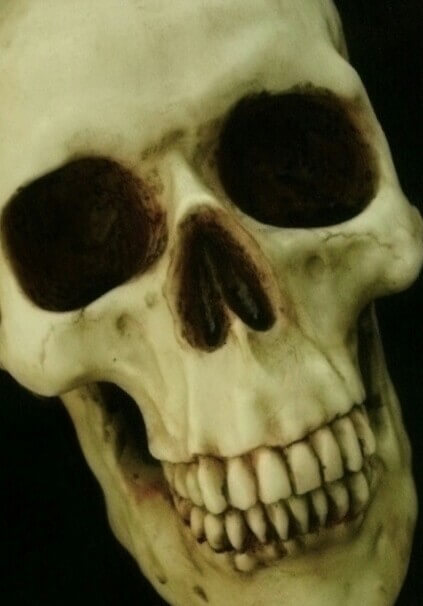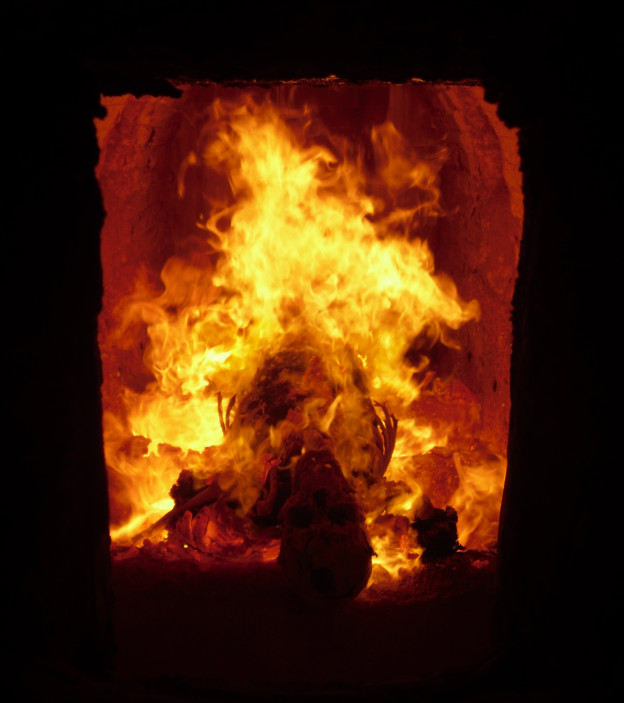Cremation refers to the combustion, oxidation and vaporization of a corpse to basic chemical compounds, including gases, mineral fragments and ashes. Following cremation, the family of the decedent receives a container or urn that holds their loved one’s ashes. Many times, for financial reasons, an individual will forego a funeral with a burial, opting for cremation: The National Funeral Directors Association (NFDA) states that since 2005, cremation rates have increased by approximately 13 percent (from 32.3 percent to 45.4 percent). It is believed that cremation is on the rise because it is more economical than a burial is: The average cost of a funeral with cremation is approximately $6,000, which is about $1,100 less than the average cost of a typical funeral with a burial. By 2030, the National Funeral Directors Association projects a substantial increase in the number of cremations, with cremations representing 71 percent of funerals.
A Casket or Cremation Container
Prior to beginning the cremation process, the deceased is placed inside a casket or an approved cremation container. This container may be constructed of wood or a combustible material like cardboard. In addition, there are inexpensive caskets available designed exclusively for use during the cremation process.
The Cremation Chamber
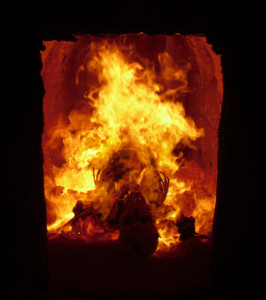
“Cremated Process” by Henry Mühlpfordt is licensed under CC BY-SA 3.0
The casket or container that is holding the deceased is placed inside the cremation chamber. The temperature within the cremation chamber is raised to somewhere between 1400 to 2000 degrees Fahrenheit. It takes approximately 2 hours for the fire, overwhelming heat and the evaporation process to consume the organic material.
Any bone fragments that remain following cremation are referred to as ‘cremated remains.’ Initially, these bone fragments are placed in a stainless steel container to cool.
Non-Consumed Items
Once the cremated remains are removed from the chamber, a magnet is used to find any metal items that were not consumed.
Items that are frequently removed from inside the chamber following the cremation process include:
- Prosthetic hip joints
- Metal that remains from clothing (zippers, buttons, etc.)
- Bridgework
- Any other medical hardware
All of these items are initially placed inside a stainless steel container to cool. Once cooled, these items are disposed of in an approved manner.
Dental silver and gold are not recoverable following a cremation as they are commingled with the cremated remains.
Pacemakers must be removed before the cremation process as they could explode when exposed to high temperatures. Additionally, jewelry or other mementos will be destroyed in the cremation chamber; therefore, any items that the family would like to keep must be removed by the funeral director before the deceased is transferred to the crematorium.
Processing Cremated Remains
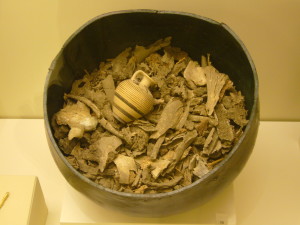
“Cremated Human Remains” by Nabokov is licensed under CC BY-SA 3.0
Once removed from the cremation chamber and cooled, the cremated remains (bone fragments) are placed in a machine that is designed to reduce them to fine particles. After the remains are reduced, they are placed in a temporary container (provided by the crematorium) or in an urn that was previously purchased by the decedent’s family.
Embalming and Cremation
Individuals who choose cremation over burial do not necessarily need to be embalmed; however, some families choose to have their loved one embalmed prior to a public viewing of the body. Embalming may be required if the corpse needs to be transported to a distant location or if there is a substantial length of time before the cremation process can be completed. If a corpse is not embalmed, it must be refrigerated to halt the decomposition of tissue. Refrigerating a corpse that has not been embalmed protects others from potential health hazards.
Viewing Prior to and During Cremation
Some funeral homes offer a rental casket to be used during viewing (wake). If desired, family members can usually make arrangements through the crematory or funeral home to view their loved one’s cremation.
Following the Cremation
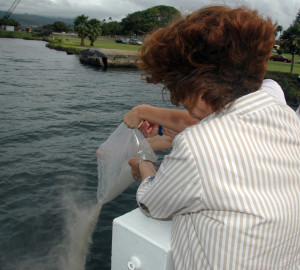
In conclusion, the majority of people avoid thinking and talking about their death; however, making your funeral wishes known now makes it easier for your loved ones to mourn your death. Furthermore, documenting your wishes will ensure there are no disputes between family members as to whether you wanted a funeral with a burial or a funeral with cremation.
Sources:
- http://www.cremationresource.org/cremation/how-is-a-body-cremated.html
- http://science.howstuffworks.com/cremation2.htm
- https://en.wikipedia.org/wiki/Columbarium
- http://nfda.org/planning-a-funeral/cremation/160.html
- http://www.cremationinfo.com/cremationinfo/questions.htm
- https://smartasset.com/life-insurance/how-much-does-the-average-funeral-cost
- http://www.telegraph.co.uk/women/womens-life/10825710/The-real-reasons-why-death-is-still-so-taboo-hard-to-talk-about-with-your-loved-ones.html
- https://www.google.com/url?sa=t&rct=j&q=&esrc=s&source=web&cd=3&ved=0ahUKEwj8-ZCqhP_KAhWFHD4KHWyjAXMQFggzMAI&url=http%3A%2F%2Fwww.us-funerals.com%2Ffuneral-articles%2Fhow-cremation-is-becoming-the-nations-preferred-choice.html&usg=AFQjCNF2SCJfwusn3_vjOMwwGbrn7C9S_Q&sig2=S0ulHjqryq1UUpEsH4gP-g&cad=rjt
